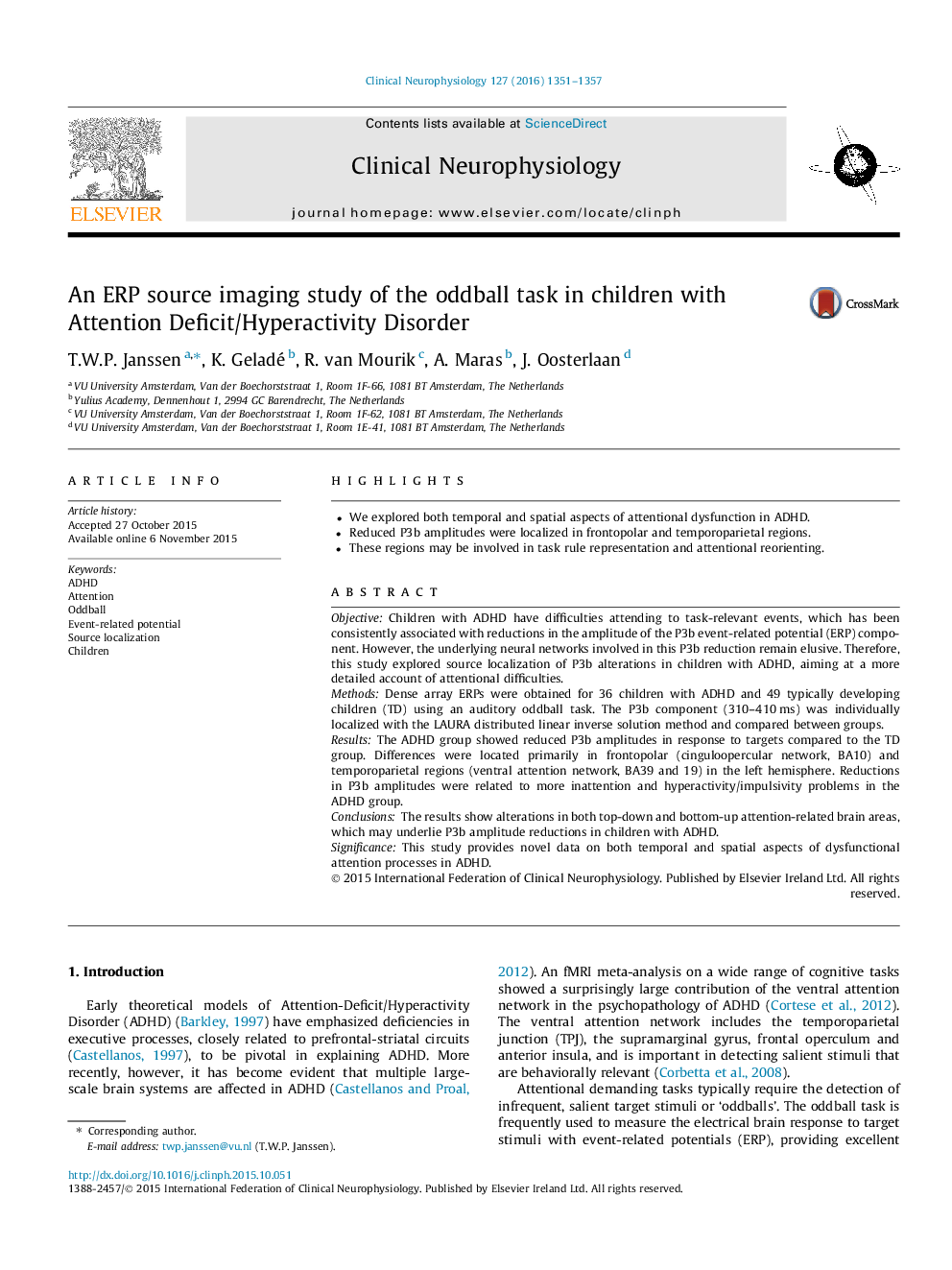| Article ID | Journal | Published Year | Pages | File Type |
|---|---|---|---|---|
| 6007589 | Clinical Neurophysiology | 2016 | 7 Pages |
â¢We explored both temporal and spatial aspects of attentional dysfunction in ADHD.â¢Reduced P3b amplitudes were localized in frontopolar and temporoparietal regions.â¢These regions may be involved in task rule representation and attentional reorienting.
ObjectiveChildren with ADHD have difficulties attending to task-relevant events, which has been consistently associated with reductions in the amplitude of the P3b event-related potential (ERP) component. However, the underlying neural networks involved in this P3b reduction remain elusive. Therefore, this study explored source localization of P3b alterations in children with ADHD, aiming at a more detailed account of attentional difficulties.MethodsDense array ERPs were obtained for 36 children with ADHD and 49 typically developing children (TD) using an auditory oddball task. The P3b component (310-410Â ms) was individually localized with the LAURA distributed linear inverse solution method and compared between groups.ResultsThe ADHD group showed reduced P3b amplitudes in response to targets compared to the TD group. Differences were located primarily in frontopolar (cinguloopercular network, BA10) and temporoparietal regions (ventral attention network, BA39 and 19) in the left hemisphere. Reductions in P3b amplitudes were related to more inattention and hyperactivity/impulsivity problems in the ADHD group.ConclusionsThe results show alterations in both top-down and bottom-up attention-related brain areas, which may underlie P3b amplitude reductions in children with ADHD.SignificanceThis study provides novel data on both temporal and spatial aspects of dysfunctional attention processes in ADHD.
